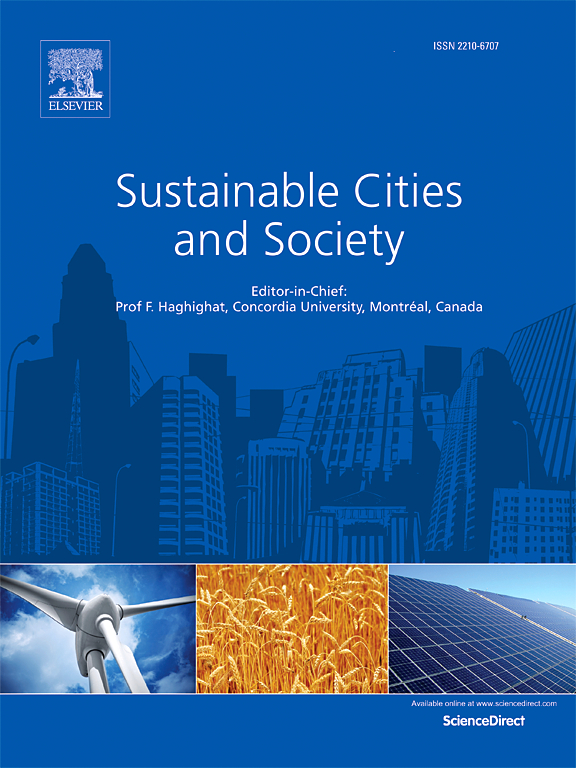Optimal management of smart grid rental and electric vehicles for remote energy sharing between distinct-scale buildings with novel business model development
IF 10.5
1区 工程技术
Q1 CONSTRUCTION & BUILDING TECHNOLOGY
引用次数: 0
Abstract
Renewable energy sharing by internal grids has been proposed to enhance the load matching of zero-emission building (ZEB) clusters. However, past research focused on how the internal grid enhanced energy sharing from an energy-based perspective. The power limitation of the internal grid, the collaboration of the internal grid and electric vehicles (EVs), and the business model for renting the grid capacity from the grid operator still need to be investigated. In this work, an internal grid and twenty EVs are used to enhance the techno-economic performance of two distinct-scale buildings by remote energy sharing. The result shows that Case 10 with vehicle-to-building (V2B) at a rented grid capacity of 1500 kW improves the matching from 0.491 to 0.506 and increases the relative net present value (NPVrel) from 9.52×108 to 9.61×108 HKD, compared to only building-to-vehicle (B2V) cases. The neutral grid rental fee is in the middle of its upper and lower limits, which solves the benefit contradictions between the stakeholder's electric savings and the grid operator's income. A proper rented capacity for the stakeholder is where the internal grid provides the highest present value (PV). To enhance the scalability and applicability, some system design parameters, EV parameters, and economic parameters are tested to show the possible deviations in the techno-economic performance.
求助全文
约1分钟内获得全文
求助全文
来源期刊

Sustainable Cities and Society
Social Sciences-Geography, Planning and Development
CiteScore
22.00
自引率
13.70%
发文量
810
审稿时长
27 days
期刊介绍:
Sustainable Cities and Society (SCS) is an international journal that focuses on fundamental and applied research to promote environmentally sustainable and socially resilient cities. The journal welcomes cross-cutting, multi-disciplinary research in various areas, including:
1. Smart cities and resilient environments;
2. Alternative/clean energy sources, energy distribution, distributed energy generation, and energy demand reduction/management;
3. Monitoring and improving air quality in built environment and cities (e.g., healthy built environment and air quality management);
4. Energy efficient, low/zero carbon, and green buildings/communities;
5. Climate change mitigation and adaptation in urban environments;
6. Green infrastructure and BMPs;
7. Environmental Footprint accounting and management;
8. Urban agriculture and forestry;
9. ICT, smart grid and intelligent infrastructure;
10. Urban design/planning, regulations, legislation, certification, economics, and policy;
11. Social aspects, impacts and resiliency of cities;
12. Behavior monitoring, analysis and change within urban communities;
13. Health monitoring and improvement;
14. Nexus issues related to sustainable cities and societies;
15. Smart city governance;
16. Decision Support Systems for trade-off and uncertainty analysis for improved management of cities and society;
17. Big data, machine learning, and artificial intelligence applications and case studies;
18. Critical infrastructure protection, including security, privacy, forensics, and reliability issues of cyber-physical systems.
19. Water footprint reduction and urban water distribution, harvesting, treatment, reuse and management;
20. Waste reduction and recycling;
21. Wastewater collection, treatment and recycling;
22. Smart, clean and healthy transportation systems and infrastructure;
 求助内容:
求助内容: 应助结果提醒方式:
应助结果提醒方式:


